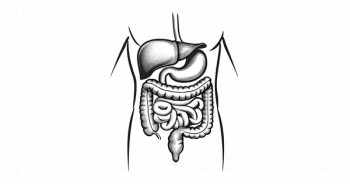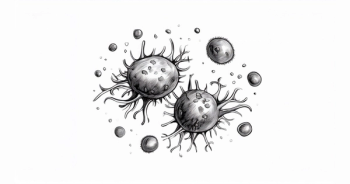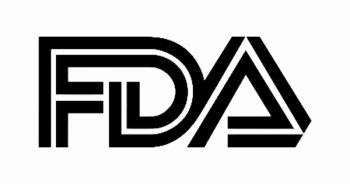
QUILT-88 Study: Promising Survival in Pancreatic Cancer
The QUILT-88 study reveals promising survival rates for advanced pancreatic cancer patients using a multimodal treatment approach, combining chemotherapy and immunotherapy.
Key data presented from the QUILT-88 study (NCT04390399) demonstrate promise in patients with second-line or greater locally advanced or metastatic pancreatic cancer, according to findings presented at the
For the subset of third-line patients (n = 43), the median overall survival (OS) was 6.2 months (95% CI, 5.0-7.1). For all patients in the third- to sixth-line setting (n = 84), the median OS was 5.7 months (95% CI, 4.3-6.4). These OS durations are notably high for a third-line metastatic pancreatic cancer cohort, particularly given the absence of established standard third-line therapies in this disease setting.
The QUILT-88 study was an advanced pancreatic cancer protocol initiated during the COVID-19 pandemic. The trial enrolled patients with third-line or greater metastatic pancreatic adenocarcinoma who maintained a good performance status.
The therapeutic strategy was a comprehensive, multimodal regimen. Patients received systemic chemotherapy consisting of gemcitabine, nab-paclitaxel, and aldo-doxorubicin. Concurrently, stereotactic body radiation therapy (SBRT) was administered to 1 or more selected lesions, guided by safety and anatomical considerations. Integrating immunotherapy, the protocol also included administration of IL-15 (nogapendekin alfa inbakicept-pmln [Anktiva; N-803]) and NK PDL-1 cells. This approach combined cytotoxic chemotherapy, targeted radiation, and immune-modulating agents to address the disease from multiple angles.
In an interview with Targeted OncologyTM, Tara Seery, MD, medical oncologist at Chan Soon-Shiong Institute for Medicine in El Segundo, California, and medical director of hepatobiliary cancer and co-director of cell therapy at Hoag Medical Center, discussed the findings from the QUILT-88 trial (NCT04390399) which were presented at ASCO 2025.
Targeted OncologyTM: Could you provide some background of the QUILT-88 study and the rationale?
Seery: The QUILT-88 study was an advanced pancreatic cancer protocol. The unique thing about it is when we opened it up, literally, it was in the middle of [the] COVID[-19 pandemic]. We had patients from all over the place come, and we had to write visa applications for them to come. What QUILT-88 did is it looked at patients who were third-line metastatic or more and who had a good performance status. What we did is we gave them gemcitabine and nab-paclitaxel and a drug called aldo-doxorubicin. With that, we also did SBRT to 1 or more lesions, depending on safety and location. Then we gave patients our IL-15, or N-803, and they also got our NK PD-L1 cells. We had chemotherapy, we had immune-based therapy, and radiation all in one.
What were the key outcomes from the study?
The first thing that we like to toot our horns about is that our survival across all the patient subtypes was 5.8 months, which is pretty high for a third-line regimen. When we started kind of digging deeper, we had some patients that did exceptionally well. I had a patient that has been on [the regimen] for almost 2 years, [and] we are trying to figure out the characteristics of these patients. So, number 1, we know this: a CA19-9 that is not too high. When we found this cutoff of 4079.6, and 4000 is still quite a high CA19-9, we found that those patients did better. When we looked at the absolute lymphocyte count... Now, the absolute lymphocyte count has been something that has been discussed for many years. It is nothing new. Realizing when the lymphocyte count is actually higher seems as if patients can respond better to the treatment. We realized when the absolute lymphocyte count was greater than or equal to 1.045 × 109, we noticed that improvement. This is one of the things that we're looking at. We are now analyzing this absolute lymphocyte count in all of our patients and saying, "Okay, maybe we need to raise this lymphocyte count so when they are undergoing treatment, they will be able to react better to it." And that is what's going on.
Could you elaborate on the role of N-803?
N-803 is what's called IL-15. And IL-15, what that does is it stimulates your T helper cells and your own natural killer cells. [The thought] is that it is raising your own lymphocyte count. [The] approved formulation [of N-803 is] in bladder cancer, and it is a subcutaneous injection that is given in the abdomen. The unique thing about it is that patients will receive this injection, and about 2 days later, they will actually have a rash on their abdomen from it. We always warn patients that it is very delayed. They know for sure they got the injection. But typically, we have been giving it to patients on 2- to 3-week interval while they are on treatment, and we have noticed we have been able to keep their lymphocyte count elevated.
Were there any patient subgroups who appeared to benefit more significantly from the regimen?
Those were the lower CA19-9s; it was less than 4000, per se. Then these patients that were coming in with the absolute lymphocyte count in the normal range. And then when we could keep it in the normal range, those are the patients that really benefited.
How manageable was the safety profile?
The main issue with QUILT-88 is the rash from the N-803. Patients would come up with their own treatment regimen, and a lot of them found that just cool aloe vera gel actually made everything feel so much better. [It is a] red rash, but it is not painful or itchy; it just feels warm. The cold aloe seems to be treatment trick that patients liked. Also, when we gave our PD-L1–linked cells—those are our NK cells with the PD-L1 linked to it—occasionally, patients would have a little infusion reaction, and that is just treated while they're getting the cells. But that's about it. Then we just have the normal reactions from chemotherapy in which we monitor for decreased blood counts, such as hemoglobin [and] platelets.
What are the next steps for this therapeutic strategy?
We are in the process of writing a neoadjuvant pancreatic trial that we will open up shortly. The thought is that these are [patients with] borderline resectable or locally advanced pancreatic cancer, in which we give this therapy upfront and then get them to surgery. That is what we are working on right now. We are excited about that. We are also working on just an N-803 protocol for kind of any patient subtype, and it will be in the advanced setting. After they have received 2 lines of therapy, they can get the N-803 with their current treatment regimen.
What are the key takeaways that you want people to know?
One of the things that we have always been talking about it, but we kind of forget, is [looking] at the absolute lymphocyte count. We are obsessed with the neutrophil count, but the lymphocyte count is actually quite important… The goal is, let's see if we can get that within the normal range, and that will assist patients [with] responding to treatment and tolerating treatment. The other thing is, we have not ruled out immune therapy-based regimens yet in pancreatic cancer, but I think it is kind of a combination approach. We are going to need it in with chemotherapy.









































